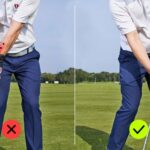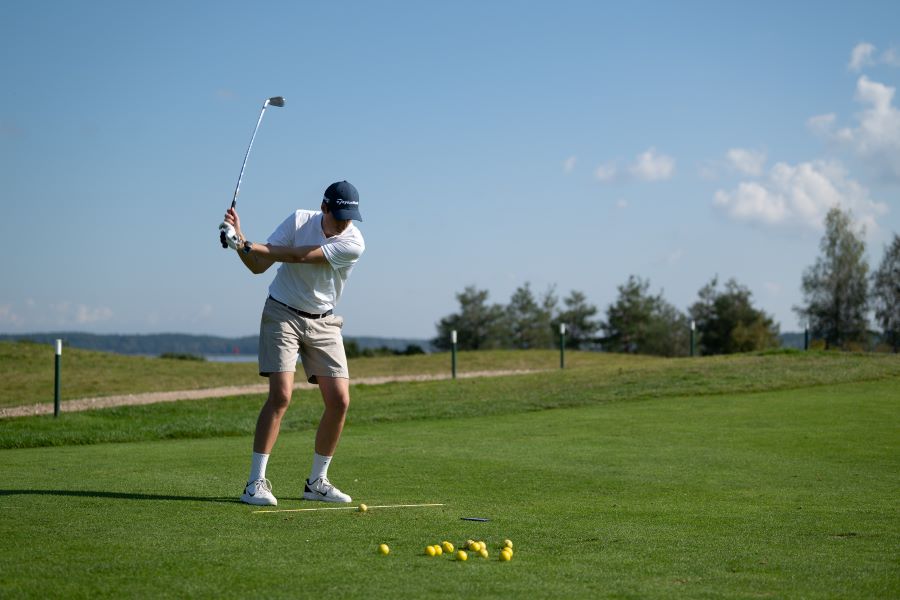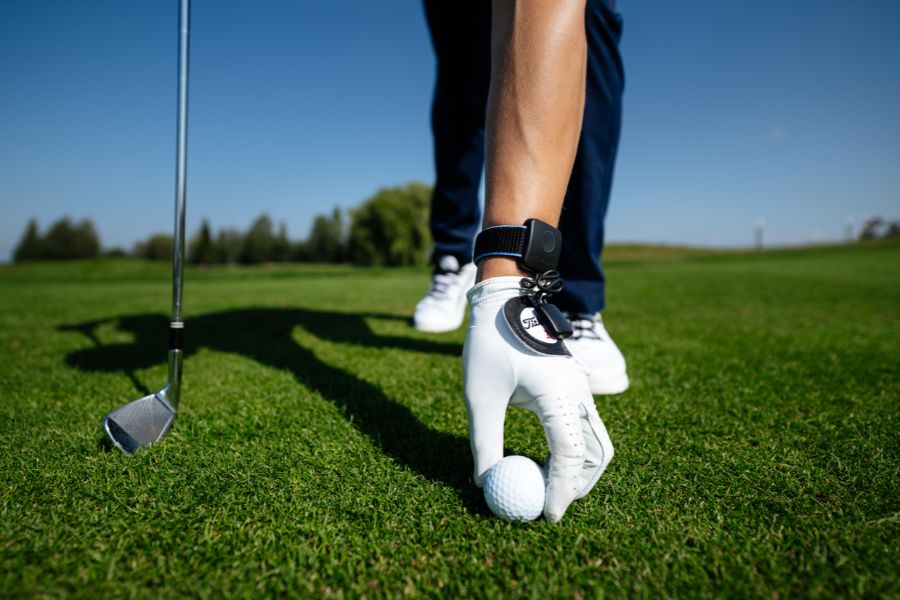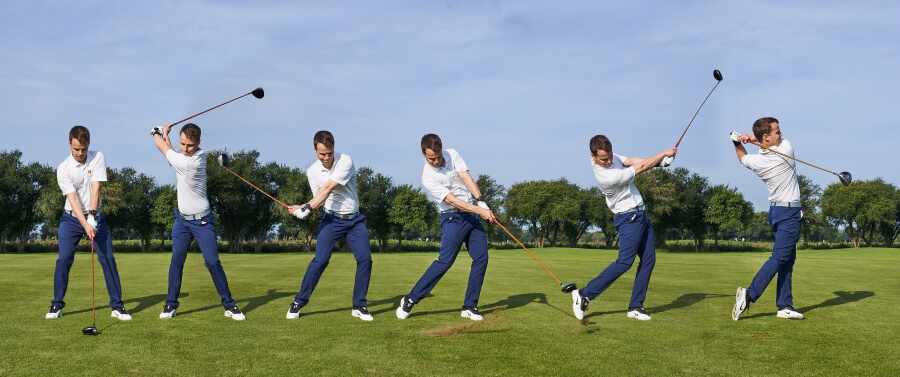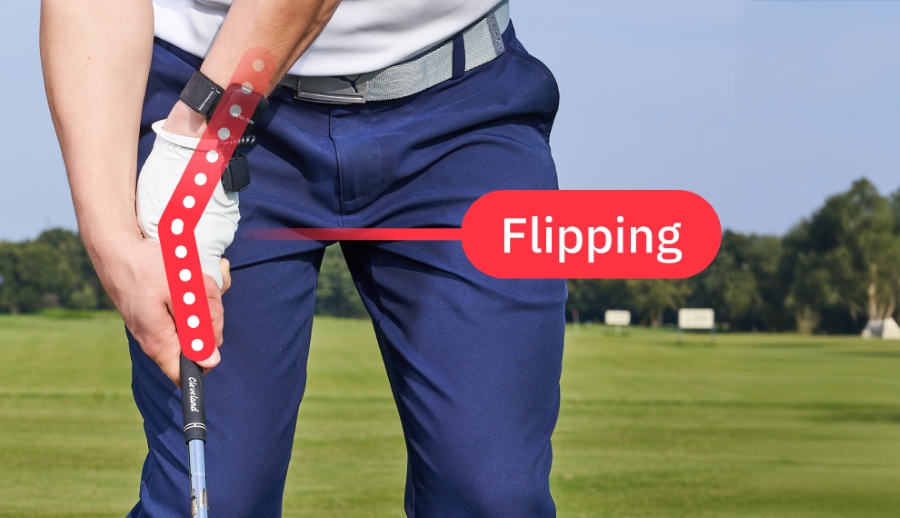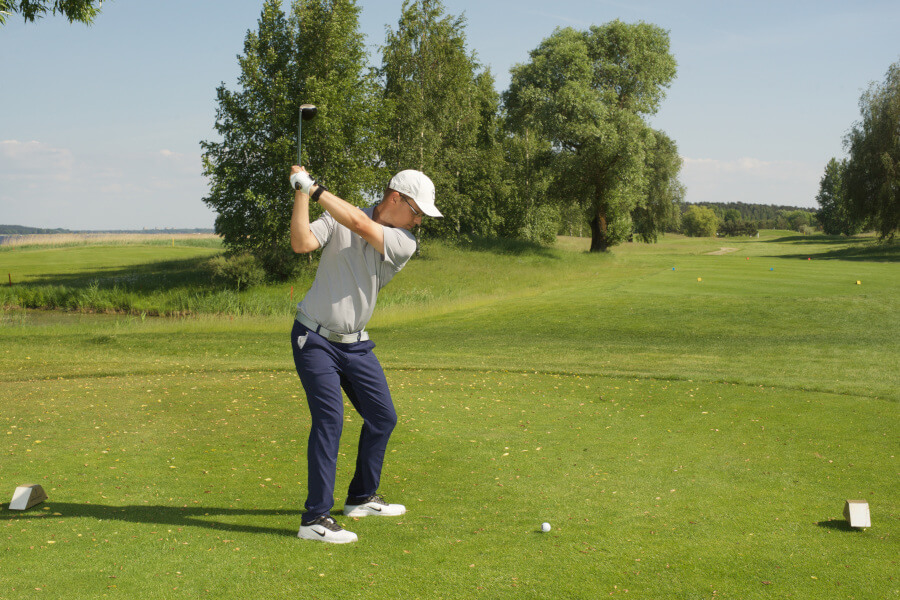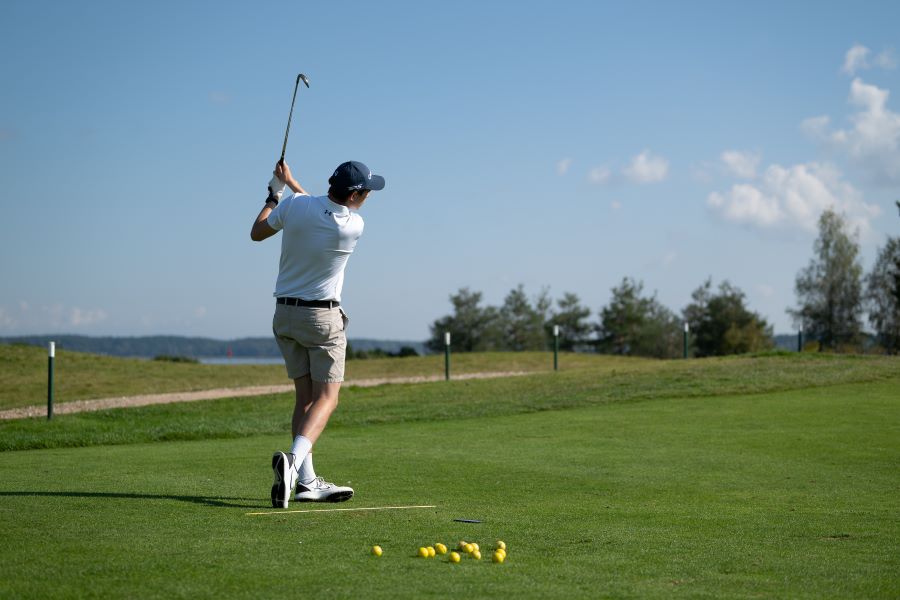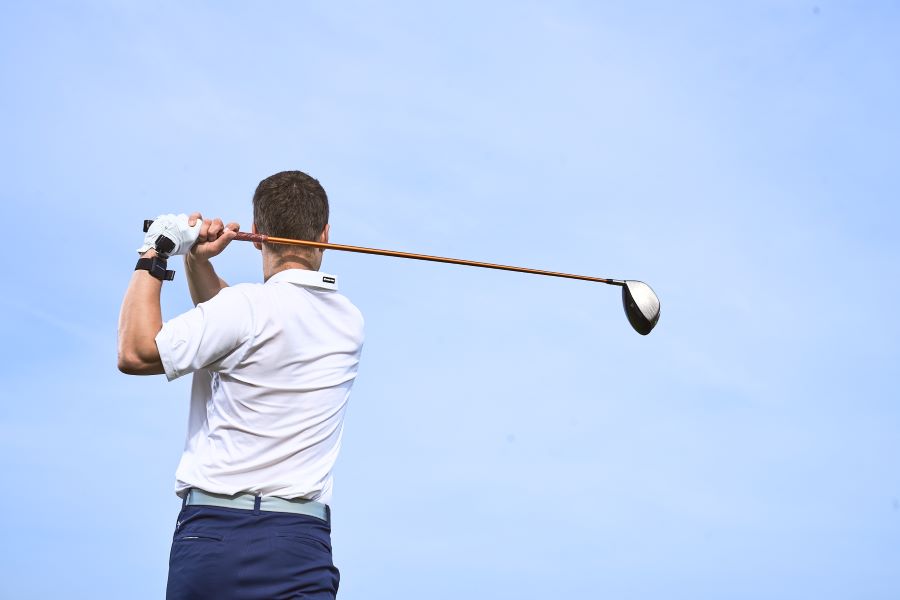Early vs. Late Release in the Golf Swing: Causes, Fixes & Drills to Train a Proper Release
If you’ve ever hit a golf ball and said to yourself, “That felt late,” chances are you were talking about the release.
The release might be the most misunderstood part of the golf swing. It happens in a split second, but it determines how solidly you strike the ball, where it starts, and how much it curves.
Most golfers either release the club too early, throwing away lag and losing compression, or too late, holding the angle so long that they trap the ball too low or pull it left.
With HackMotion wrist data, we can see exactly when the release happens and how to fix the timing. In this guide, we’ll explain what early and late release really mean, what causes them, and how to train a more efficient, Tour-style release pattern through impact.
Early vs. Late Release (Key Takeaways)
- Early release means the clubhead overtakes the hands before impact. It leads to weak, high shots and inconsistent contact.
- Late release happens when you hold the lag too long and never let the club release naturally, producing low hooks or blocked shots.
- The ideal release occurs just after impact, when the lead arm and shaft are in line and the wrists begin to rehinge upward.
- HackMotion makes it possible to measure when your wrists move from flexion to extension and adjust the timing precisely.
Contents
What Is an Early Release?
An early release happens when the golfer loses wrist angles too soon in the downswing. The clubhead overtakes the hands before impact, usually because the wrists unhinge early or the lead wrist moves into extension (cupping).
Many golfers do this because they think it’s powerful or because their position at the top of the backswing is incorrect.
What You’ll Notice
If you’re releasing early, you’ll often hit thin, high, or spinny shots. The club bottoms out behind the ball, and even solid contact feels “glancing” instead of compressed.
It’s also a leading cause of slices, especially when the face stays open through impact.
Why It Happens
Early release stems from poor sequencing and a misunderstanding of how to create power.
Many players instinctively throw the club from the top, thinking it adds speed. In reality, it robs them of stored energy and shifts low-point control backward.
Common causes include:
- Scooping or trying to lift the ball into the air.
- Lack of forward shaft lean at impact.
- Dominating the downswing with the arms instead of rotation.
- Insufficient lead wrist flexion or trail wrist extension.
Fixing Early Release in Golf
To correct an early release you need to delay wrist extension and instead move towards wrist flexion. This is what allows the lower body to start the downswing.
You’ll also be able to keep the hands leading and the shaft trailing through impact.
What Is a Late Release?
A late release is the opposite of an early release. It’s when you hold the lag a bit too long on the downswing and never let the clubhead pass the hands through impact.
Many times the late release happens when a player has tension in the golf swing or is afraid of missing left.
What You’ll Notice
Golfers with a late release tend to hit low, strong draws or hooks. The contact feels heavy, and the ball struggles to climb. You may also see blocked shots to the right if the clubface can’t square in time.
Why It Happens
Holding the angle too long prevents the wrists from re-hinging naturally. Players often do this to “control” the clubface or to overcorrect a flip.
While it may help for a short period, it reduces speed and consistency.
Typical causes include:
- Excessive trail-hand tension.
- Over-holding wrist flexion or lag angle.
- Lack of natural wrist rehinge post-impact.
- Misunderstanding of how to square the face.
Fixing Late Release in Golf
The goal is to release through impact, not after it. Once the hands pass your lead thigh, the wrists should begin to re-hinge upward not roll over.
This keeps the face square while allowing the club to travel on a natural arc.
Early vs. Late Release Comparison
To narrow down exactly where your issues are in the golf swing, you can use this early versus late release comparison. See what each feel like, where the issues lie, and how you can fix it:
| Early Release | Late Release | Ideal Release | |
|---|---|---|---|
| Timing | Before impact | After impact | Slightly after impact |
| Lead Wrist | Extends too soon | Stays flexed too long | Maintains flexion through impact, then extends |
| Trail Wrist | Loses bend early | Holds bend too long | Gradually unbends through impact |
| Ball Flight | High, weak, slice | Low, hook, pull | Mid-flight, compressed, straight |
| Common Cause | Scooping / flipping | Over-holding lag | Proper body sequence |
| Fix Focus | Delay wrist extension | Allow natural rehinge | Balanced release timing |
Struggling with early or late release? See our full guide on how to release the golf club correctly.
Drills to Train a Proper Release
In addition to getting the proper mechanics of the release down, you also have to learn how to time the release correctly.
These three drills will help you do that with some consistency.
1. Hit Hard, Stop Quick Drill
The Hit Hard Stop Quick Drill is a great way to work on the release, but also train a better impact position.
It teaches golfers where the club should be at impact with the shaft and lead arm aligned, not flipped.
HackMotion Motorcycle Drill – Step by Step
- Set up with a short iron.
- Make a short swing and stop immediately after impact.
- Your goal: the shaft should not pass your hands at impact.
- Keep your weight forward and the lead wrist slightly flexed.
- Repeat 10–15 times, feeling the ball-first, turf-second strike.
This drill helps you feel what a compressed, controlled impact looks and feels like. Once you can consistently hold the post-impact position, you’re ready to build speed.
2. Release Drill
The Release Drill is built into the HackMotion app. It lets you work on your release in real time.
This drill builds on the Hit Hard, Stop Quick Drill by connecting the impact position with the early stages of the follow-through. It trains golfers to maintain structure while allowing the club to flow naturally.
Perfect Your Release with HackMotion
Fine-tune your release for consistent contact. Start with a short swing to master control before adding power.
HackMotion Release Drill – Step by Step
- Address the ball with a shorter swing in mind.
- Swing from club parallel in the downswing (P7) through to impact and into club parallel post-impact (P8).
- Keep the hands slightly ahead of the ball at impact.
- Use HackMotion to ensure wrist angles remain “in range.”
- After 10 reps, add speed gradually while maintaining wrist control.
3. Casting Drill
Early casting, throwing the club from the top, is a major power leak. Many amateurs believe it adds speed, but it actually destroys sequencing and leads to weak, glancing contact.
The Casting Drill helps retrain the kinematic sequence so the lower body starts first, allowing the arms and wrists to lag naturally behind.
HackMotion Casting Drill – Step by Step
- Make a smooth backswing, then start your downswing by shifting weight to the lead side and rotating your hips. Focus on not pulling down with your arms.
- Check your HackMotion trail wrist data. Keep the trail wrist extended (bent) as you begin the downswing, avoiding an early “throw.”
- Let the arms drop and the club lag behind your hands to store power.
- Start slow, gradually increasing speed while maintaining your wrist angles.
- HackMotion Tip: If your trail wrist extension “straightens” too soon on the downswing graph, you’re still casting.
Final Thoughts
Whether you release too early or too late, the fix starts with understanding what your wrists are doing through impact. Every great ball striker maintains lead-wrist flexion and trail-wrist bend through the strike, then allows a natural upward rehinge afterward.
Start by practicing some drills and narrowing down the exact issues you are struggling with in your release.
Wear your HackMotion to get instant feedback on your wrist position at setup, the top of the swing, impact, and release. You’ll be able to make the necessary connections to improve your ball striking and scoring.





